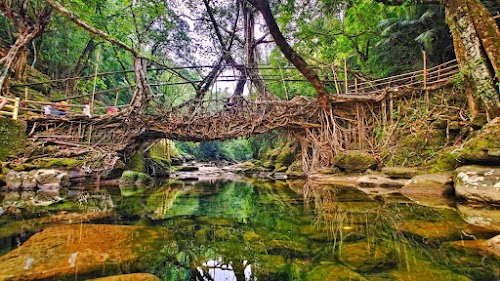
Living Root Bridge
Mawlynnong, India
- Enjoy the scenic beauty of the area
- Explore the surrounding rainforest
- Interact with the local Khasi community
- Take photos of the natural architecture
- Walk across the Living Root Bridge
Known for:
Description:
The Living Root Bridges of Mawlynnong are a remarkable testament to indigenous engineering and a deep connection with nature. These bridges are formed by the aerial roots of the Ficus elastica tree, carefully guided and intertwined by the Khasi and Jaintia tribes over centuries. Witnessing these natural wonders is an unforgettable experience, offering a unique blend of adventure and cultural immersion. The most famous double-decker bridge is a sight to behold, a testament to the ingenuity and patience of the local communities. The surrounding lush greenery and the sound of flowing rivers add to the serene atmosphere. A walk across these bridges is a thrilling experience, providing a sense of harmony with the environment. These bridges are not just crossings; they are living, breathing entities that connect people and nature.
History:
The tradition of building Living Root Bridges dates back centuries, originating with the Khasi and Jaintia tribes of Meghalaya. Faced with the challenge of crossing swift-flowing rivers and deep ravines in the region's heavy monsoon season, the tribes devised a sustainable and ingenious solution. They observed the natural propensity of the Ficus elastica tree's aerial roots to grow downwards and intertwined them to form sturdy bridges. This process, passed down through generations, involves carefully guiding the roots across the river using bamboo scaffolding and nurturing them until they naturally fuse and strengthen over time. Some bridges are over a hundred years old, a testament to the durability and sustainability of this ancient practice. The bridges represent a harmonious blend of human ingenuity and natural processes, a living legacy of the region's rich cultural heritage.